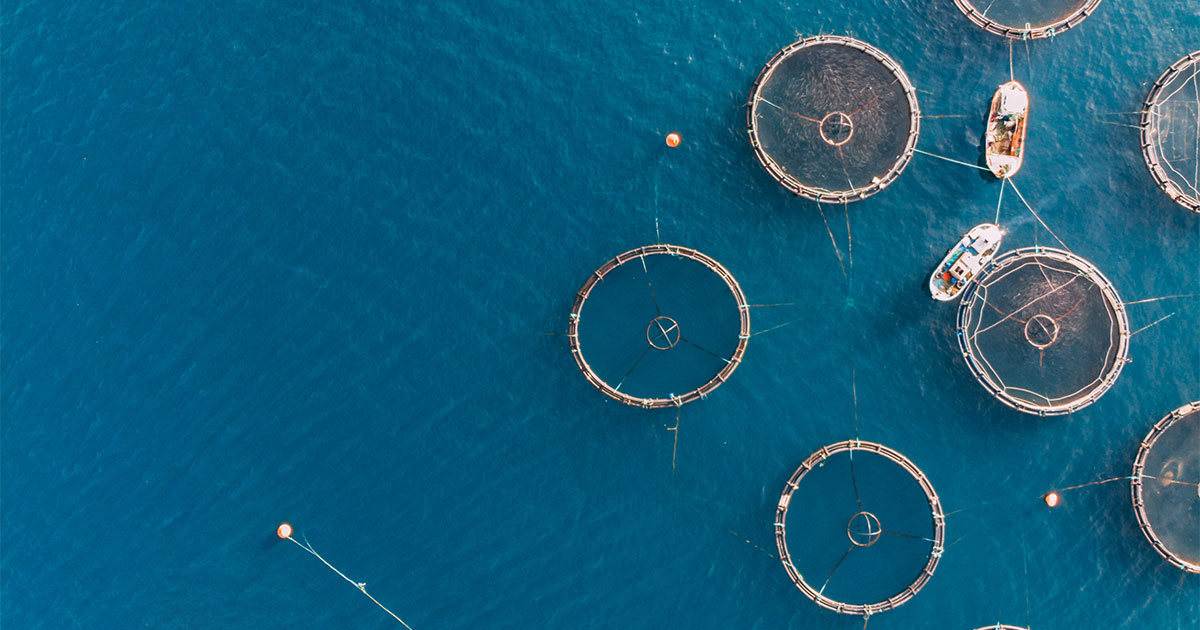BioMar is a world leader in high performance diets for more than 45 different fish and shrimp species in more than 90 countries.
Founded in 1962 by a group of Danish fish farmers, BioMar’s heritage is a long-term commitment to developing the aquaculture industry in a responsible and sustainable way.
Our main focus is supporting our customers delivering healthy, great tasting seafood. We do this by innovating efficient, safe and nutritious feed for aquaculture with minimal environmental impact.
To this end, BioMar has created the BioSustain Impact Parameters to provide an understanding of the most critical areas of environmental impact from feed production.
We have developed these indicators to further guide and define sustainable innovation in feed and aquaculture.
BioSustain IMPACT Parameters
At BioMar we are on a blue journey to create aquaculture feeds with the lowest possible footprint on our environment. We take a holistic view on sustainability and have identified target areas of critical importance to humanity.
Our highly skilled sustainability scientists use the most accurate data and robust scientific methodologies and actively engage in high level projects to improve data coverage, data quality and methodological development.
Quantifying and disclosing the impacts of our feeds help steer us towards a more sustainable aquaculture industry.
Parameter 1: Climate Action
Feed ingredients typically represent around 80 percent of the carbon footprint of seafood farming. As the world transitions to a zero-carbon economy reducing our feed impact is essential to our business and our customers.
The carbon footprint of feed is a measure of the total GHG emissions generated from the different stages of the feed life cycle. Increased atmospheric concentrations of greenhouse gases, expressed in CO2 equivalents, cause the global warming that we are experiencing today. The only way to avoid the consequences is simple: reduce global GHG emissions.
BioMar follows PEF methodology when calculating carbon footprints and has set verifiable science-based targets through the Science Based Targets initiative (SBTi). BioMar’s ambition is to reduce its feed carbon footprint by 1/3 by 2030, with the aim of ensuring that BioMar will achieve “net-zero” no later than 2050.
Parameter 2: Circular & Restorative
The science is clear, industrial agriculture cannot maintain its usefulness to society indefinitely with the current rates of ecological damage (i.e., deforestation and agrochemicals) and resource use (i.e. freshwater, fertilizers, and fossil fuels).
The key is to restore a balance between the societal benefits of agriculture with the societal benefits of healthy ecosystems. Circular economy principles and restorative practices are central to sustainable and responsible seafood supply chains.
In a circular economy, resources are kept in use for as long as possible to extract their maximum value. Products and materials are recovered and renewed, leveraging business models designed to support this regenerative activity.
BioMar considers raw materials originating from by-products and waste streams to be circular. We seek to decouple feed supply chains from directly competing with food for human consumption. Examples of circular raw materials are land animal and marine by-products, originating from the food processing industry.
To reduce pressure on wild fish stocks, the global aquafeed industry has transitioned from high inclusion levels of marine ingredients to largely plant-based diets. Restorative production is therefore the first critical step to reverse the current trends and move agriculture toward sustainability.
We define restorative ingredients as raw materials that significantly shift the balance between ecosystem impacts and human production systems. The goal is to stimulate net-positive environmental outcomes compared to time-bound relevant benchmarks. This includes encouragement of regenerative agricultural practices and next generation low-impact raw materials.
Parameter 3: Forage Fish Dependency Ratio (FFDR)
Marine ingredients are limited resources and should be used responsibly.
Good stewardship of our ocean and the aquatic environment is important to BioMar. Novel and alternative ingredients allow us to create feed solutions that cover the nutritional and economic needs of the aquaculture industry while reduced dependency on scarce marine resources.
The Forage Fish Dependency Ratio (FFDR) indicates the amount of wild marine resources used to produce farmed fish or shrimp, as calculated according to the ASC farm standards. This measure takes into account the protein and oil contribution from wild fish equivalents, where the most limiting factor determines the FFDR of the feed. The FFDR of the production on a farm can be calculated by multiplying the FFDR of the feed by the economic Feed Conversion Ratio (eFCR) from farm production.
The Blue Journey Towards Increased Sustainability
In 2015, BioMar Group launched its first ever global sustainability improvement programme set for a five-year period. In our 2020 Sustainability Report we conclude on this KPI programme and of the 13 ambitious targets set, we hit the mark on 9. This work laid the foundation from which the new 2030 Ambitions have been built.
“Humanity has burdened our planet and pushed beyond planetary boundaries. We must strive beyond sustainability and innovate with solutions that restore the planet while supporting its people. That is why we are setting forward this ambitious plan,” said Carlos Diaz, CEO at BioMar Group.
“We believe in transparency and even through some KPIs might seem too ambitious, we strive to aim high and disclose what we have, and have not achieved. We believe in the sustainable future of the aquaculture industry and look forward to continuing to drive change.”
You can read BioMar’s 2020 Sustainability Report here: www.biomar.com/en/global/sustainability/sustainability-report/
Discover more about our BioSustain IMPACT Parameters here: www.biomar.com/en/global/sustainability/impact-parameters/
This feature appeared in Environment, Coastal & Offshore (ECO) Magazine's 2022 Summer edition, to read more access the magazine here.





